Restoration & Remastering
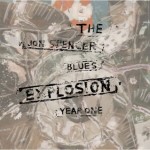

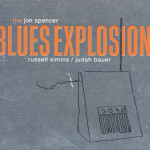
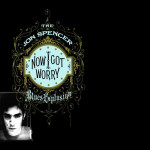
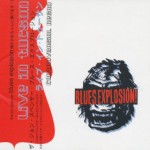
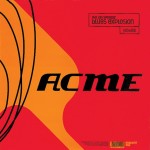
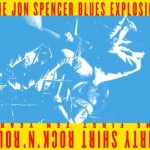
Jon Spencer Blues Explosion
In 2010, Jon Spencer decided to reissue and remaster almost the entire catalog of the Jon Spencer Blues Explosion.
This was a very exciting project to take on, but at the same time it was a big challenge!
First, because we pretty much had to work with every format available to men in the past decades… Various types of analog tapes (and of course most of them needed to be baked), Compact Discs, digital files, cassette tapes, DAT’s, vinyls and even a 45rpm flexi-disc were all part of the source materials for this project.
Second, because we were adding not only one or two bonus tracks to the existing albums, but in some cases we had up to a full length cd worth of unreleased material. Those materials could be anything from alternate mixes, to live performances recorded by the BBC and everything in between.
The main challenge was to compile all these different materials in the most coherent way. Jon was well prepared and organized. He knew exactly what direction he wanted to go. Between his vision and our experience, I believe we were able to give an exciting new life to The Jon Spencer Blues Explosion old catalog.
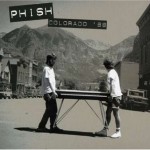
Phish: Colorado ’88
Over the course of five nights at the Roma, as well as another at the nearby and better-attended Fly Me To The Moon Saloon, Lynch illustrates his love and appreciation for the fledgling New England band by not only taking a feed from engineer Paul Languedoc’s soundboard and recording the shows on an assortment of Maxell cassettes, but also by taping over the likes of Pink Floyd’s Atom Heart Mother and the Grateful Dead’s 1978 Red Rocks Amphitheater concert. He won’t regret it...
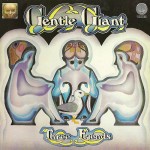
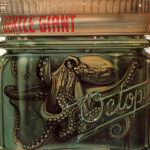
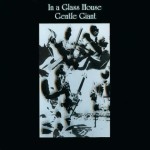
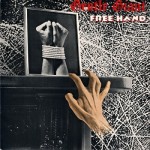

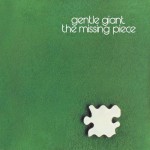
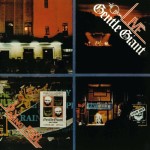

Gentle Giant Remastering
Fred Kevorkian interview Feb. 2010 by John A Wilcox / www.progsheet.com
1 – Who approached you to do the remastering & when was this?
I was approached in November 2009 by Derek and Ray Schulman (original members of the band) to re-master six (plus three later) of the “Gentle Giant” CD”s and LP’s re-issues.
I’ve already met Derek in the past because we did some re-mastering work for his New York based record label: DRT entertainment.
2 – Did they have any specific requests as to how they wanted you to approach the sound?
Once agreed upon working together on these re-issues, my first question was: “Is there any specific directions you want me to take with the projects?”
During a conference call with Derek in NY and Ray in London, the response was simple. “We would like to have a more “up to date” sound without loosing the integrity of the original records! Of course, to me, this meant altering the overall dynamics and tonal balances. This could be a risky task! I am thinking about the fans who know those recordings inside out. There is no meter that tells me what’s acceptable or not! So I went with my guts and hoped for positive feedbacks.
3 – What formats did you receive the albums in?
Six of the albums were transferred from the 1/4″/15ips tapes onto DVD’s by Capitol Mastering in LA. (Very nice job!) The files were 96KHz / 24 Bit. “In a Glass House” came from a 1630 EQ’d master. Each transfer were a continuous file of each LP’s side. (In those days you had to sequence the master mixes with the proper spacing between each song in order to cut the individual vinyl side in one shot .) The tapes used were the original masters or the 1:1 copies. Some of the recordings were Dolby A encoded. Also a few of these tapes had to be baked prior to the transfer. (Over time, the glue that binds the oxide of the tape to the plastic will eventually absorb moisture and causes the playback to be difficult or even impossible. Tapes are baked to remove the moisture.) Along with the DVD’s came a print out copy of each 1/4″ tape boxes with all the adjustments and EQ notes made by the cutting engineer back in the 70’s. Interesting stuff!
4 – How much time were you allotted to work on the 7 albums?
Between the budget allocated for this project and some pressing deadlines I figured I had about 4 days to get the job done! That’s no luxury! It’s more like a challenge!
Besides these limitations I decided to go the extra mile to get it right . I turned it around in 6 days. Not bad for industry standards! At the end of each day I would make a CD-Ref for Derek and upload the re-mastered files on my FTP server for Ray to listen to them in the UK. The good news: All the albums were approved right away by both members. No revisions needed. We’ve met the dead lines within the budget and I am also very pleased with the results.
5 – You mentioned that “In A Glass House” came from a 1630 master. I’d heard that 1630 can have drop out problems. Was there any significant difference in quality with this master?
Luckily “In A Glass House” didn’t have any drop outs. I guess the digital tape was stored properly all these years to avoid any deterioration. The main difference: That’s an EQ’d master. Not “flat master” like the other sources. In a way, it’s like mastering from the commercial CD and not from the original mixes. This is not an unusual situation when the original tapes were not available or technically unusable.
6 – What did you need to do sonically to bring these masters up to a standard that satisfied you?
In general all albums needed more or less overall EQ and compression to bring them to a more updated standard. (This was the main goal required for these re-issues.) Beside the overall processing some of the songs needed more attention in specific areas. (Restoration work). Hiss, hum and tics were some of the problems that I have encountered specifically during the soft sections of the music. All the sonic processing was done with analog and digital outboard gear. But all the other issues were addressed with specific plug-ins to remove or diminished all the unwanted noises and artifacts. Tics were removed individually, hiss and hum were removed by sections and crossfaded slowly in and out of the mastered files.
7 – Did any particular songs or albums require more effort or cause any problems?
“In a Glass House” Sounded very bright and mid-rangy (especially for the guitars and the broken glass sound effects.) Thanks to multi-band compression! Hiss was a problem.
“Power and the Glory” Was also very bright and thin. It needed a lot more meat for sure!
“Free Hand” Seemed very boomy and needed more presence and top end. By adding high frequency the hiss became also more predominant and became a problem to fix.
“Interview” Felt dull and needed some more presence. Hiss wasn’t a problem. (I think the Dolby encoded tapes helped to reduce the noise).
“The Missing Piece” Sounded bright and thin. Hiss was not a major issue here, even if some of the quiet moments needed some cleaning.
“Giant for a Day” Felt pretty good, maybe a little dull. Hiss was also an issue.
“Playing the Fool” The double live album, lacked some bottom in general. But hiss wasn’t an issue here even if the transfer was done from the 1/4″ copy tapes.
8 – There’s been much debate about the use of compression and noise reduction on many current remasters, compression in particular. Is there such a thing as “good” compression and “bad” compression?
Debates will never end no matter what we do! I had some nice e-mails regarding some of the re-mastering that I’ve done in the past but I always felt that a few hard-core fans will always comment how the new release doesn’t reflect the “vibe” of the original record. In general the feedback from the Gentle Giant re-mastering was extremely positive especially from the artists themselves. Derek schulman was very exited about it and told me that he had to live all this years with those recordings that he thought didn’t always sound the way he wanted! Fans don’t always know what the artist intended to do. Technical limitations, deadlines, budgets were probably part of the equation.
Noise reduction has come a long way! The one thing that everybody agrees about digital is it’s power of processing. Basically in the old days you would rely on the popular Dolby to reduce tape hiss and some sharp filters to remove hum etc… With today’s technology and algorithms we can achieve so much more in the field of restoration. But, at the end of the day we still have to rely on our ears! Because of the huge amount of power available it is very easy to get carried away and destroy a whole recording in a flash. Any processing has side effects, and noise reduction is no exception. By using it tastefully you can clean up a whole program (or sections) and bring out some of the subtleties in the music hidden before behind the noise floor. It seems that there is always a fine line to be aware of.
Compression…. probably the best friend and the worst enemy in the history of audio recording! There is so much to say about it. I will only discuss this matter in the context of re-mastering 30 or 40 year old recordings . When my clients asked me to make the re-issues more “up to date” they didn’t mean to make things as loud as possible! Instead they were looking to minimize the overall dynamic range in a gentle way in order to bring up the average level. Compression, and peak limiting can help a lot in that direction. They can make these recordings stand out better in our modern listening world. Unlike today’s pop music, zero dynamic range is not the goal! Just a little make over, is what they are looking for. Compression is a very powerful tool. But very dangerous too. You don’t want to ruin the original artistic intent just for level sake! Once again, listening is still key in this process.
9 – Why are less dynamics a good thing in some cases?
To me dynamics are essential and very important in any type of art form. For example a horror movie that only has scary scenes from beginning to end would not be very effective. This is why the quiet moments in those kind of films were cleverly incorporated to build up the tension! At least that’s the way it used to be. Classical music was totally based on that concept. It was all about dynamics. Unfortunately now days it is less and less popular because of the way people are listening to music anytime anywhere! Classical music was meant to be heard in a concert hall not in a noisy environment. Did you ever try to listen to a symphony in a car with the windows down?
Today things are different. Most action movies are packing more energy scenes by the minute than ever! The medias, like television networks are loading our screens with non-stop high density informations in order to keep the viewer’s attention. No down time at all! They don’t want to give you a chance to switch channel. Radio stations have also embraced that policy for many years now. This is also true with most kids with low attention span downloading one song at a time and incorporating them in a random playlist! This why artists and labels are concerned to keep the listener’s attention. They want their songs to compete with the rest of the pack. So reducing the dynamic range of a program will help keeping the average level to a decent exciting point even during the softer sections. I don’t think this is very healthy for the artistic aspect of the music, but this is what’s happening today and it is something to consider if you want your music to be heard. Again less dynamics is not necessary a good choice but it seems to be a frequent requested by most of my clients for the past few years.
10 – With the infinite degrees of tweaking you can do to a master, how do you decide when a remaster is done?
Generally I like to work pretty fast. When I hear the flat source for the first time I know right away what I want to do. To me that initial impression is critical and I try to stick with it all the way. Sometimes a specific song can be a little more challenging and will need to be mastered in separate sections. For example the verses would get a specific treatment while the choruses or the bridge would get a more or less aggressive processing. Cleaning up noises and fixing technical problems can also be time consuming. For this specific re-mastering job I had to meet some pretty tight deadlines so I had to work fast and deliver on time.
11 – Throughout the listening process, as you were working on the Gentle Giant remasters, what equipment were you listening to them through? And did you listen in several different sound environments, or just one?
For the past ten years I have been using the same basic monitoring system. It works for me because my clients are coming back! Dunlavy’s SC IV speakers powered a “Crown Reference One” amplifier. It’s extremely fast, powerful and still musical. I don’t believe in expensive hyped speaker’s wires…. I believe in a lot of copper! So, I built my own wiring system. It’s massive with a very low resistance factor! Five years ago when Kevorkian Mastering moved into the Avatar Studios building I decided to add a pair of Velodyne sub-woofers. They provide me a more accurate bass reading way down below. I also use a customized pair of tiny one-way powered Fostex speakers that helps me balance the energy from song to song and gives me that “Auratone” type of reference. (Very convenient to hear how the vocal is sitting in a track). That’s pretty much it.
12 – With the download versions of these albums, there are bonus tracks. Did you remaster those as well?
No I didn’t work on these bonus tracks.
13 – What remastering had you done for Derek Shulman prior to these 7 albums?
I worked on a compilation album “Guaranteed Rock Satisfaction” and some repackaged enhanced CD’s from Gwar, Clutch and Blindside. Nothing very complicated or too involved.
14 – You said that all the sonic processing was done using analogue & digital outboard gear. What specific gear was used?
My main set-up is based around the classic Chris Muth CM-2020 analog console and CM-2040 monitoring system. The digital raw files were played back from a Sonic Solution / Mac based workstation. I use that setup just like a tape machine. Nothing else! The AES signal was sent to a D to A Lavry converter and fed to the input of the analog console. Once in the analog domain, various gear can be inserted in the chain. For this project I first hit a Sontec EQ that would give me the overall tone of the program. The signal was then split into a M/S (Mid / Side) processing unit. It separates the center of the soundstage (M) in one channel and the side (S) information in another one. This is a very powerful tool! It gives me the ability to EQ and / or compress the center separately from the stereo field. Not just the conventional left or right. Also by adjusting the gain of one these channels I can correct a problematic mix and bring out some missing informations. In this M/S processing chain I have the mastering version of the Manley “Vary-Mu” compressor and a Maselec equalizer. Then the signal is converted back to basic stereo again and fed to a Maselec de-esser. From there a pair of Chandler LTD-2 compressor (mastering version) are taking over for additional control. Next, a Prism A to D converter sends the AES audio to my digital bay. The digital signal was processed by a Z-System EQ, a Weiss compressor / de-esser, and finally the L2 limiter. Here again the digital signal can be split into an M/S program with a Z-System digital mixer in the loop. In general the analog gear gives me the overall tonal balance of the music while the digital processing helps tweaking the fine details. It was all done with hardware. Finally the mastered digital audio was captured by the Audio Cube (Cube-Tech) / PC based workstation. The Audio Cube is where I sequenced the albums. I used some the it’s amazing plug-ins to de-noise or de-hiss all of the problematic sections. This how it all went down.
15 – You mention that you used lots of copper. What does copper give you that other metals and alloys do not?
Copper is known to a very good conductor just like silver. Silver is slightly better in that regard but far more expensive. To me if you use a little more copper you can achieve the same or even a better results for a much lower price. Both will oxidize with time. Gold doesn’t! But it’s of course very pricey and by the way it has higher a resistivity than copper or silver. This is why gold is mostly used for cable terminations and binding posts. I did too. Low resistance, capacitance and inductance are very important for many reasons. Without getting too deep in details it helps minimize any loss or signal deterioration between the amps and the speakers. They keep the cables out of the sonic equation as much as possible. A lot of variables come in play. For example: What is the output impedance of the power amp? What kind of wiring is used inside the speaker cabinet? How far away are the speakers from the amplifier? What is the damping factor?, etc…All these parameters will indeed affect the overall system quality. But the question is: How insane can we go before it becomes irrelevant ? Oxygen free cooper cables are proven to reduce resistivity by removing some impurities. But will they have any significant impact on the sound quality? In theory they should. But in reality I think the result is too subtle to make sense in the big picture. (Technically throwing an ice cube in an olympic size swimming pool will change the water temperature by a fraction of a degree. Unless you’re a shark, could you tell the difference?) Personally I was never impressed by any esoteric type of cables. Even the ones costing over $1000.00 per foot! (The only thing I was impressed with is that they are usually packaged in a very nice mahogany box…! So you can carry them around???) The same applies for AC or microphone cables. We did so many blind tests while I was on staff for about ten years at Sear Sound. My personal reactions, and the verdicts from all the highly respected producers and engineers on those panels were always very disappointing! No differences between the “exotics” and the basic good quality wires! I can go on and on about this subject. Yes, it is very popular within the audiophile market. I guess, an easy way to make good profits! Why would anyone use a three feet $400.00 IEC power cabe for a specific unit while hundreds of feet of standard wires are running in the walls? I always think about my system as a chain. Do all the links have the same quality from the Con Edison feed to my Drivers? The bottom line is: This is why I opted for standard heavy duty copper wires for my speakers. I believe they are extremely transparent within sanity! Again this is my personal view, and it works for me.
16 – Have Derek or Ray mentioned if they have more Gentle Giant archival material they want you to work on in the future?
No, not yet.
17 – Note:
The re-mastering process cannot really change history. Instead, it will provide the artists another chance to get it right. It also makes their recordings more accessible to a younger public decades later. I feel very privileged to have re-worked on all these amazing albums and I hope that even the most dedicated fans will enjoy them!